Hay mucha investigación sobre autoconocimiento y autismo y esta nos dice que hay muchos niños que saben que hay cosas que los hacen diferentes de los otros niños y que tienen alguna noción de lo que son esas diferencias, pero a la vez tienen dificultad para comprender los matices y hacerse un concepto coherente, realista, de ellos mismos.
Peter Vermeulen.
Sabemos que ser informado sobre un diagnostico psicológico sobre el desarrollo del niño no es fácil, ni una experiencia se equipara con otra. Todos los padres, familiares y responsables se ven afectados por un acontecimiento como este; bien sea por tener mucha información, muy poca información o sencillamente no saber sobre qué les están hablando. Se supone que luego sobrevienen las etapas del duelo, cada una con un inicio, curso y cierre, hasta que finalmente llega la aceptación de la situación.
Las investigaciones y las historias de vida no han proporcionado y explicado todo un compendio de etapas sucesivas a un diagnóstico de autismo; lo cual, sin duda, ha sido de importante ayuda para las personas implicadas y para los profesionales que trabajamos con estas familias. Sin embargo, es claro que durante el curso del duelo y aún mucho después siguen habiendo dudas y preguntas que nunca se agotan, debido al variopinto de situaciones que se van presentando a lo largo del curso del desarrollo del niño.
Si nos sentamos por un momento y pensamos seriamente por todas las confusiones, contradicciones y enfrentamientos experienciales por los que hemos pasado para poder expresar si quiera que podemos comprender las implicaciones médicas, psicoeducativas, psicológicas, nutricionales, ocupacionales, sociales y comunicativa de un diagnóstico de autismo; sin duda, pensaríamos mejor la forma cómo prodríamos comunicar estos hechos.
Imaginen ¿qué podría pasar por la mente de un niño que ya tenga la capacidad para comprender ciertas situaciones, enterarse, escuchando conversaciones que no están dirigidas a él, ni lo incluyen, que tiene algo que se llama autismo?
En este sentido, Peter Vermeulen expresa :
En base a más de diez años de experiencia trabajando con jóvenes y adultos con autismo sin retraso mental, … la clase y cantidad de información existente en la literatura tradicional sobre el autismo y especialmente la forma de dicha información (está escrito con un lenguaje con muchas palabras y conceptos abstractos) no se adapta a su estilo específico de procesamiento de la información.
Luego asiste a su centro educativo y se enfrenta a situaciones semejantes. Los docentes, compañeros y padres, también incurren en un señalamiento pasivo y tan silencioso como el miedo y las dudas que invaden al niño. Las consecuencias serán cada día más notables, expuestas en comportamientos que comprometen el entusiasmo y alegría que se debe sentir naturalmente en un ambiente escolar rodeado de potenciales amigos.
Comunicar un diagnóstico sobre autismo, incluye a los padres y también al niño. Evidentemente, todo este proceso dependerá de variables críticas, de esta forma, la ecología de la situación permitirá determinar si el niño posee competencias cognitivas y conductuales que garanticen una adecuada aprehensión de significados para poder iniciar el proceso de la comunicación de su diagnóstico. En ningún caso sugiero que se realice durante una consulta, ni en casa, ni en la escuela…comunicar a un niño su diagnóstico es algo muy delicado, que si no se realiza con el debido cuidado, puede traer consecuencias que comprometan la estabilidad mental y emocional.
Durante años los investigadores y profesionales entendidos en este tema lo han advertido y han creado instrumentos capaces de guiar en forma efectiva y ajustada a cada niño y realidad familiar, no sólo la comunicación sobre el diagnóstico; sino también los elemento que permiten que el niño comprenda y se apropie positivamente de su realidad.
Una de estas investigadores es Carol Grey, con sus historias sociales.
Las historias sociales, como técnica de intervención psicoeducativa, constituyen un elemento recurrente en la práctica de los profesionales responsables de la intervención con personas con Trastorno del Espectro Autista (TEA).profesionales responsables de la intervención con personas con Trastorno del Espectro Autista (TEA).
Efectividad de las historias sociales en la intervención en el trastorno del espectro autista: una revisión
Otro autor destacado en el tema es Peter Vermeulen, sobre quien es pública su opinión sobre la importancia de comunicar y que la persona conozca su diagnóstico de autismo, para poder reafirmar su yo, defender sus derechos y posesionarse en su plan de vida, lo cual implica conocer sus fortalezas y sus limitaciones. En este sentido, emprender un proceso estructurado, donde se disponga de materiales y recursos programados para tal fin, es clave.
Es preciso que todos entendamos la importancia de saber comunicar el diagnóstico de autismo y que es un hecho que no puede dejarse a la deriva de circunstancias de momento. He expresado, y sostengo, que las consecuencias pueden ser muy graves; quizá no las veamos en el momento o, en el peor de los casos, nunca nos demos por enterados del drama interno que vive el niño (la persona), lo cual no quiere decir que no esté sucediendo.
No saber comunicar al niño, algo que es esencial para su autoconocimiento, la comprensión del mundo, construir autoestima, … no sólo es un error, sino que atenta directamente contra la dignidad e integridad: negar, ocultar o sesgar el derecho legítimo y natural a saber quién es y qué le ocurre.
Por tanto, comunicar un diagnóstico es un proceso complejo donde se debe invertir tiempo para poder avanzar de acuerdo a las necesidades del niño: interrogantes, miedos, falsas creencias, culpas y distorsiones cognitivas que afectarán su realidad a corto, mediano y largo plazo.
Profesionalmente opino que se debe comunicar el diagnóstico al niño, previa evaluación del status de competencias cognitivas, emocionales, de lenguaje, sociales y conductuales; pero hay que saber hacerlo en forma adecuada, ya que por su complejidad es un proceso que debe contar con ayuda especializada. Lo más adecuado es que se realicen sesiones programadas y planificadas, donde se maneje un material elaborado específicamente para tal fin. Y esto es una atribución que la psicopedagógía está en la capacidad de llevar a cabo.
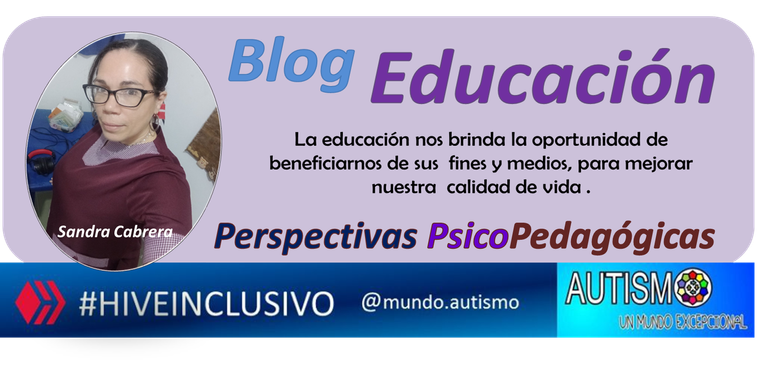
Soy Sandra Cabrera, licenciada en Dificultades para el Aprendizaje, con estudios de postgrado en Educación Especial Integral, Planificación Educativa y Literatura Infantil. Si te interesan los temas sobre educación especial, la discapacidad y las condiciones especiales del desarrollo, puedes contactarme a través de los números 04128032993 y 0412 8333334 y en:
El canal de Telegram, Trastornos del Aprendizaje.
En las redes sociales Instagram y Facebook1 y Facebook2. Sandra Cabrera Psicopedagoga.
En la cuenta de spreaker, @sandracabrerapodcast.
A continuación, traducción al inglés realizada con Google.
There is a lot of research on self-awareness and autism and it tells us that there are many children who know that there are things that make them different from other children and that they have some notion of what those differences are, but at the same time they have difficulty understanding the nuances and forming a coherent, realistic concept of themselves.
Peter Vermeulen.
We know that being informed about a psychological diagnosis on the child's development is not easy, nor is one experience equal to another. All parents, family members and guardians are affected by an event like this, whether it is because they have too much information, too little information or simply do not know what they are being talked about. It is assumed that the stages of grief then occur, each with a beginning, course and end, until finally the situation is accepted.
Research and life stories have not provided and explained a complete compendium of successive stages of an autism diagnosis, which has undoubtedly been of great help to the people involved and to the professionals who work with these families. However, it is clear that during the course of grief and even long afterward there are still doubts and questions that never end, due to the varied situations that arise throughout the course of the child's development. #
Pixabay
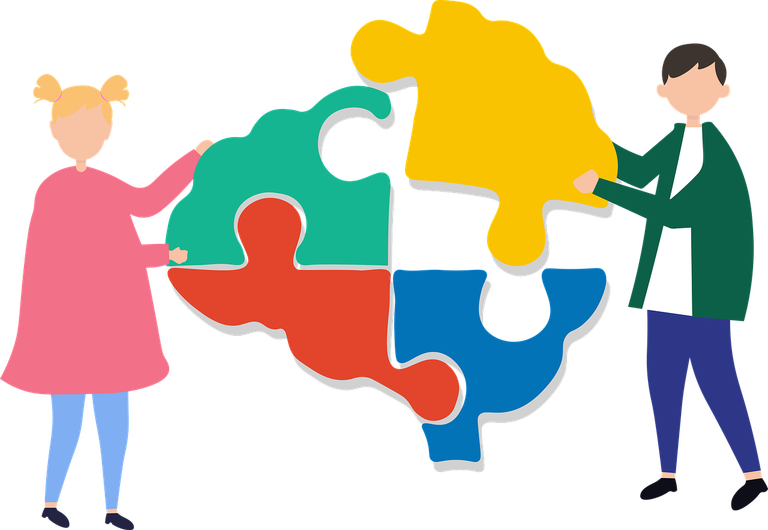
If we sit down for a moment and think seriously about all the confusions, contradictions and experiential confrontations we have gone through to be able to even express that we can understand the medical, psychoeducational, psychological, nutritional, occupational, social and communicative implications of an autism diagnosis, we would certainly think better about how we could communicate these facts.
Imagine what could go through the mind of a child who already has the ability to understand certain situations, to find out, by listening to conversations that are not directed at him, nor include him, that he has something called autism?
In this sense, Peter Vermeulen expresses:
Based on more than ten years of experience working with young people and adults with autism without mental retardation, … the type and amount of information existing in traditional literature on autism and especially the form of said information (it is written in a language with many words and abstract concepts) does not adapt to his specific style of information processing.
Then he goes to his educational center and faces similar situations. Teachers, classmates and parents also engage in passive and silent pointing out, as much as the fear and doubts that invade the child. The consequences will become more noticeable every day, exposed in behaviors that compromise the enthusiasm and joy that should be naturally felt in a school environment surrounded by potential friends.
Communicating a diagnosis of autism includes parents and also the child. Obviously, this whole process will depend on critical variables. In this way, the ecology of the situation will allow us to determine whether the child has cognitive and behavioral skills that guarantee an adequate understanding of meanings in order to begin the process of communicating his diagnosis. In no case do I suggest that this be done during a consultation, or at home, or at school…communicating a child's diagnosis is a very delicate matter, which if not done with due care, can have consequences that compromise mental and emotional stability. #
Pixabay
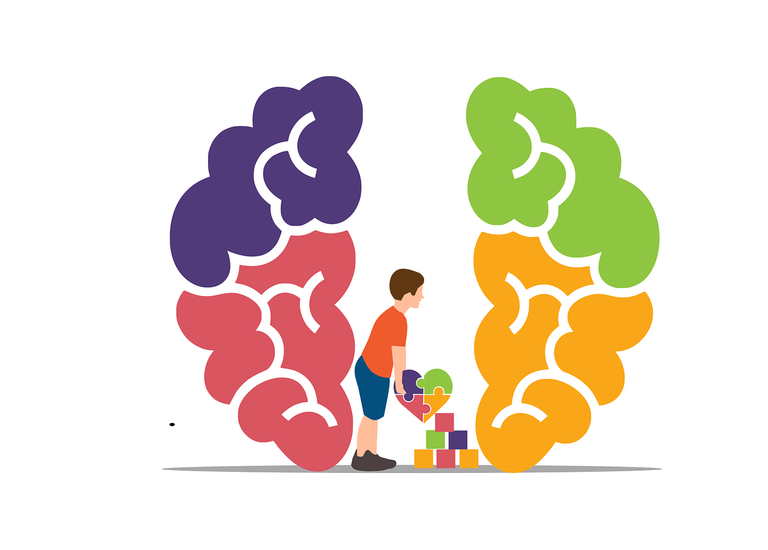
For years, researchers and professionals knowledgeable in this subject have warned about it and have created instruments capable of guiding in an effective way and adjusted to each child and family reality, not only the communication about the diagnosis; but also the elements that allow the child to understand and positively take ownership of their reality.
One of these researchers is Carol Grey, with her social stories.
Social stories, as a psychoeducational intervention technique, are a recurring element in the practice of professionals responsible for intervention with people with Autism Spectrum Disorder (ASD). professionals responsible for intervention with people with Autism Spectrum Disorder (ASD).
Effectiveness of social stories in intervention in autism spectrum disorder: a review
Another prominent author on the subject is Peter Vermeulen, whose opinion is public on the importance of communicating and making the person aware of their autism diagnosis, in order to reaffirm their self, defend their rights and take ownership of their life plan, which implies knowing their strengths and limitations. In this sense, undertaking a structured process, where materials and resources are available for this purpose, is key.
We all need to understand the importance of knowing how to communicate the diagnosis of autism and that it is a fact that cannot be left to the drift of momentary circumstances. I have expressed, and I maintain, that the consequences can be very serious; perhaps we do not see them at the time or, in the worst case, we never realize the internal drama that the child (the person) is experiencing, which does not mean that it is not happening.
Not knowing how to communicate to the child something that is essential for their self-knowledge, understanding of the world, building self-esteem, etc. is not only a mistake, but it directly attacks their dignity and integrity: denying, hiding or distorting the legitimate and natural right to know who they are and what is happening to them.
Therefore, communicating a diagnosis is a complex process where time must be invested in order to advance according to the needs of the child: questions, fears, false beliefs, guilt and cognitive distortions that will affect their reality in the short, medium and long term.
Professionally, I believe that the diagnosis should be communicated to the child, after evaluating the status of cognitive, emotional, language, social and behavioral skills; but it is necessary to know how to do it appropriately, since due to its complexity it is a process that must have specialized help. The most appropriate thing is to carry out scheduled and planned sessions, where material prepared specifically for this purpose is handled. And this is an attribution that psychopedagogy is capable of carrying out.

I am Sandra Cabrera, a graduate in Learning Difficulties, with postgraduate studies in Comprehensive Special Education, Educational Planning and Children's Literature. If you are interested in topics related to special education, disability and special developmental conditions, you can contact me at 04128032993 and 0412 8333334 and at:
The Telegram channel, Learning Disorders.
On social media Instagram and Facebook1 and Facebook2. Sandra Cabrera Psychopedagogue.
On the spreaker account, @sandracabrerapodcast.
Below, English translation made with Google.


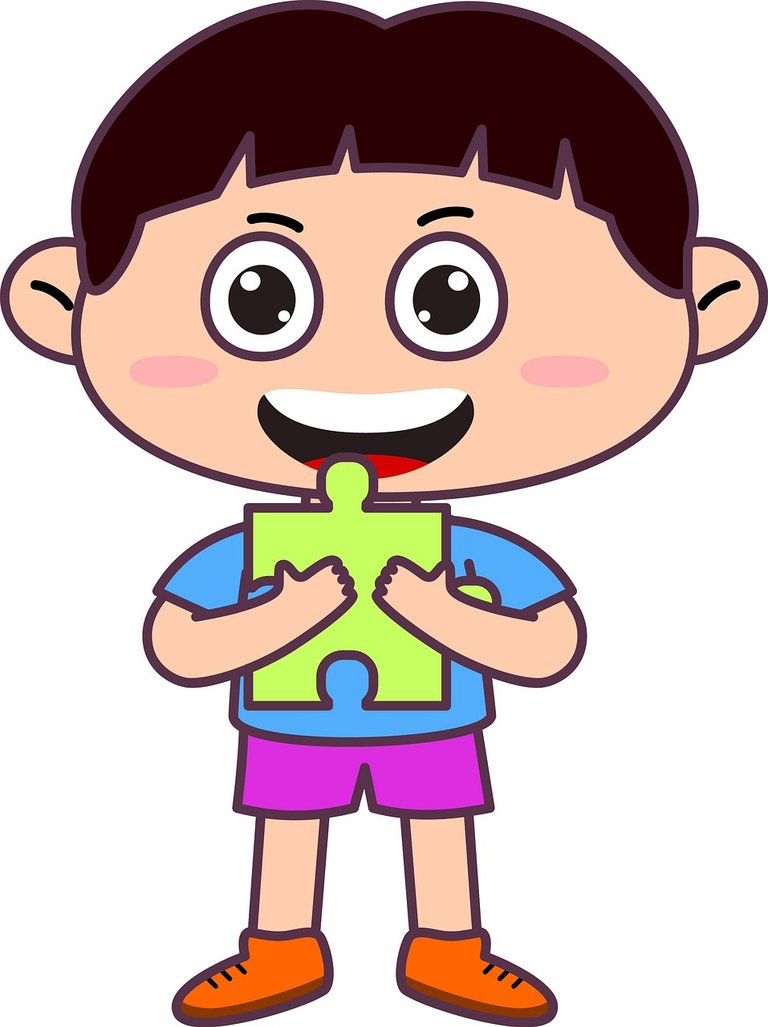
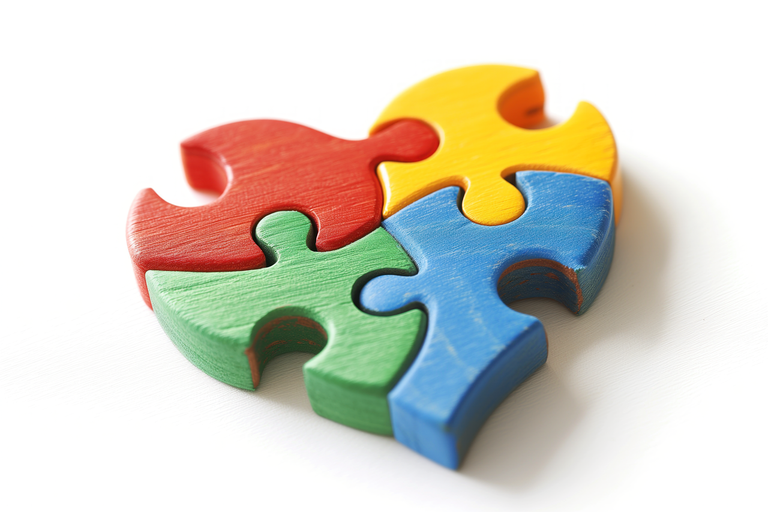
Hola @sandracabrera, ante todo te digo que me he quedado enganchada con las fuentes que nos facilitas, muchas gracias. Como siempre resulta tan útil las orientaciones que aportas. Mis hijos recibieron diagnósticos en edad temprana y al ir creciendo tuvieron algunos traspiés con sus pares lo que hizo que se sintieran diferentes e incómodos. Entonces con mucha sutileza, por decirlo de alguna manera, ya era la hora de explicar que si eran diferentes y que esto era porque tenían muchas fortalezas y algunas debilidades, pero siempre la tarea con ellos fue resaltar sus destrezas y todas sus capacidades como personas con TEA. Con buen resultado. Gracias Sandra 🙏
Gracias.
Me alegro; sin embargo, me inclino por los procedimientos más estructurados y documentados. No me atrevo a recomendar otras acciones.
Muchísimas gracias por tus comentarios y tus buenas referencias para con mi trabajo.
Saludos,@parauri.
Exacto. Estoy de acuerdo contigo porque la experiencia con mis hijos es solo una referencia. Cada caso de Autismo es distinto y las respuestas también.
De nuevo, muchísimas gracias @sandracabrera.
Muchísimas gracias, amiga.Como siempre, un contenido que alimenta y aclara, @sandracabrera
Gracias a ti.
Congratulations @sandracabrera! You have completed the following achievement on the Hive blockchain And have been rewarded with New badge(s)
Your next target is to reach 59000 upvotes.
You can view your badges on your board and compare yourself to others in the Ranking
If you no longer want to receive notifications, reply to this comment with the word
STOP¡Bienvenidas las Delegaciones / Welcome Delegations
Trail de Curación / Curation Trail
Agradecida, @eddiespino
@tipu curate 8
Upvoted 👌 (Mana: 0/69) Liquid rewards.